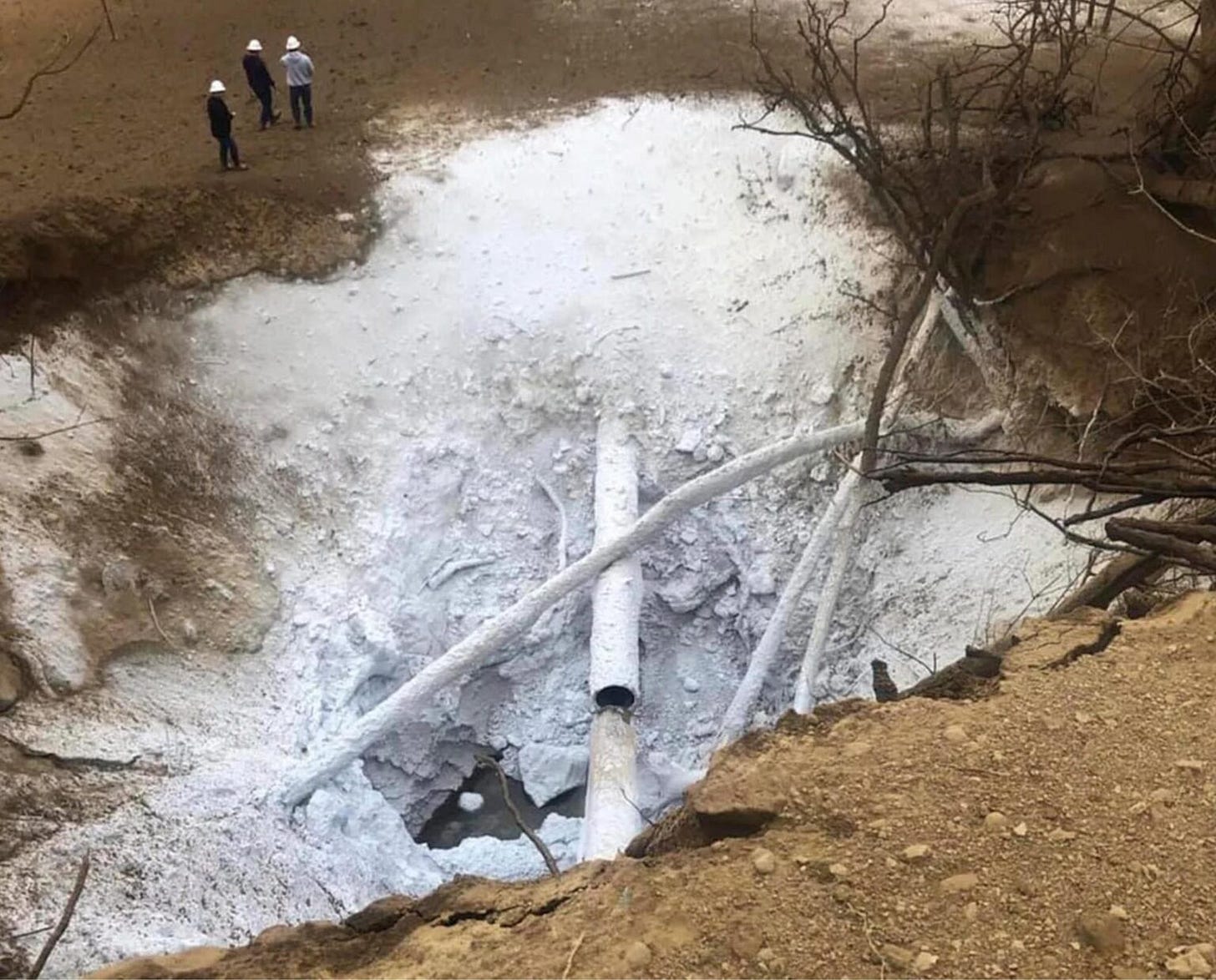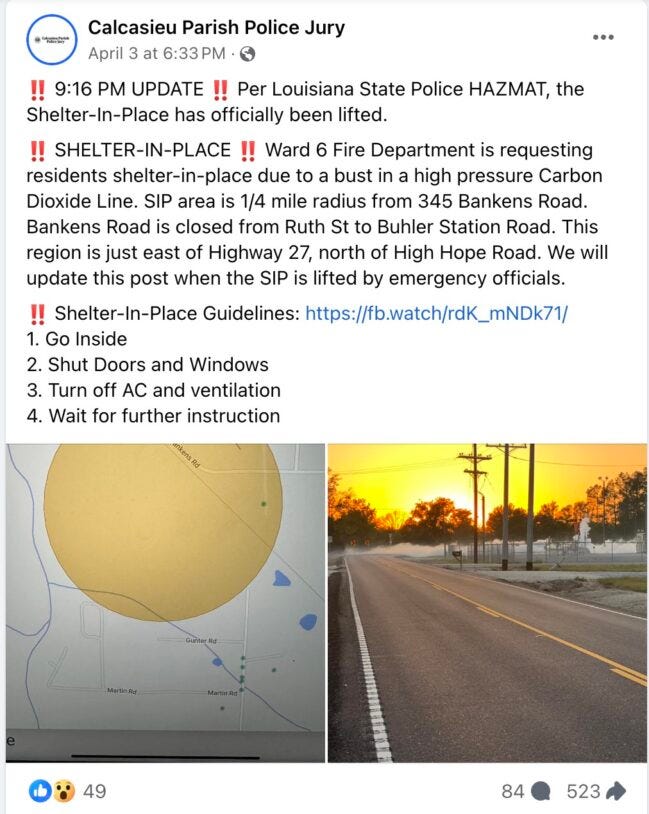Curtis Jundt, carbon pipeline expert and engineer, stopped by Townsquare Media’s SuperTalk 1270AM Talk of the Town with host Steve Bakken to discuss several safety issues with carbon versus natural gas pipelines.
According to Jundt, carbon pipelines are nothing like natural gas pipelines once you remove the shallow thought of a pipeline from the entire context.
“They are different because of the product they carry. That's first and foremost needs to be distinguished,” Jundt said. “I mean, a natural gas pipeline or CO2 pipeline or carbon steel, the thickness of the wall is usually set by what you want your maximum allowable operating pressure to be.”
Jundt continued explaining the difference between the two.
“In the case of the Summit Pipeline running east to north of Bismarck, their MAOP (Maximum Allowable Operating Pressure) is like 2,000, 2,183,” Jundt said. “A lot of the natural gas pipelines running around North Dakota and that run east to west north of Bismarck that send natural gas from the Bismarck compressor station out to eastern North Dakota, those pipelines don't run at that high of a pressure. That's another distinction.”
According to Jundt, there’s another big distinction between methane, which is natural gas, is that CO2, when it comes in contact with any water content in the pipe, can be very corrosive because it forms carbonic acid. And we all know that that can be a problem for steel,” Jundt said. “In the natural gas industry, we limit the amount of water in our interstate pipeline systems to four pounds per million cubic feet. That may have to be even a lower number when it comes to moving CO2.”
In October 2023, Summit Carbon Solutions bumped the operational timeline of their carbon capture and sequestration pipeline back two years to 2026.
Summit Carbon Solutions, and its subsidiary, SCS Carbon Transport, LLC (SCS) officials cite regulatory delays to the stall in their plans. Those are the same concerns another major carbon pipeline company, Navigator CO2, gave after cancelling their project.
Summit Carbon Solutions is a newly-formed, privately-held company based in Iowa proposing to build a $4.5 billion, 2,100-mile pipeline system and carbon capture and storage (CCS) project, which would tap CO2 emissions from Midwest ethanol plants and transport them via pipeline across five states to an underground sequestration site in North Dakota.
“They’ve never built a carbon pipeline and we are just supposed to trust they can build the world’s largest without incident?” Jundt said.
Summit calls its Midwest Carbon Express pipeline project the world’s largest carbon capture and storage project, gathering carbon emissions from ethanol plants for underground storage. It recently grew to more than 50 ethanol plants in five states – Iowa, Minnesota, Nebraska and South Dakota before ending in North Dakota
The project faces opposition from citizens, environmentalists, property rights advocates and landowners in all of the impacted states. Landowners and impacted counties along the proposed route strongly oppose the use of eminent domain for the carbon pipeline project.
In reality, this issue has become a nonpolitical, no-party issue that has brought all walks of life together so the people can educate the government on property rights, pipeline safety, basic science, total transparency and even accusations of “public-private-corruption”.
Some citizens have questioned the safety of the high-pressure, liquid pipeline, pointing to a pipeline rupture in Satartia, Mississippi, in 2020 that caused an evacuation and sent several people to the hospital. Questions have also been raised about whether the technology of sequestering carbon in deep underground formations is sound.
Negative impacts on soil and crop yields from pipeline construction are also a top concern for landowners, as is the mere fact of having a pipeline on their pristine farmland affecting land values.
In Sulphur, LA, a 2-foot diameter pipeline at a CO2 pump station released about 107,000 gallons of the carbon gas. The colorless, odorless, and heavier than air, carbon dioxide can travel undetected and at lethal concentrations over large distances.
The Calcasieu Parish (in Sulphur) issued a shelter-in-place advisory, urging everyone within a quarter mile of the pump station to close doors and windows and turn off air conditioners, but officials relied mostly on social media to convey the warning. The parish narrowed its emergency alert system to phone numbers listed for addresses within a quarter mile of the station. That amounted to about eight homes – four of which were likely unoccupied, according to parish officials.
The pump station and pipeline aren’t equipped with alarms or other methods of alerting the nearby residents when leaks or other accidents occur.
Several residents in the Sulphur say they received no notice of the leak or became aware of it via Facebook posts more than an hour after the gas began to spread.
Jundt reiterated carbon pipelines are serious and deadly.
“Not one human life is worth any of this,” Jundt said.
Summit claims its project will deliver community, economic, and environmental benefits, however, as with all pipeline projects, success is subjective.
Many citizens are publicly asking if the risks outweigh any short-term gain of construction jobs, or taxes paid on the pipeline — which is a piece of equipment that depreciates, and those taxes then go away over time.
In addition, there is safety training costs, community carbon marketing and emergency management resources needed that have yet to be addressed by the state or Summit.
“And the things that get into safety matters, the biggest thing being that CO2 is 1.53 times heavier than air, it isn't a fixient,” Jundt said. “When you get to 4% by volume, you start becoming disoriented. You can have a headache, but as you move from 4% up to 8%, your condition becomes worse, and at 8% to 10%, death is almost imminent.”
If you have an ESG-related news tip, press release, fabulous feature, podcast guest suggestion or other content concepts, please email thecontentcreationstudios(AT)gmail(DOT)com
Whether you want basic obedience for a family pet or need professional handlers for narcotic and explosive detection, BCK-9 delivers reliable results. With over 20 years of experience in the working dog community, our founder, Dwayne Farris, brings unparalleled expertise in dog training and leak detection techniques.
The BCK-9 team brings a personalized approach to ensure we tailor our services to meet your needs, providing customized solutions that go further than the competition.
With our commitment to the well-being of our clients' dogs and precision and efficiency in our results, the dedicated team of professionals at BCK-9 Services delivers excellence in every service.
Follow BCK-9 Services on their website, Facebook, LinkedIn, Instagram, X (Twitter) or TikTok.

















